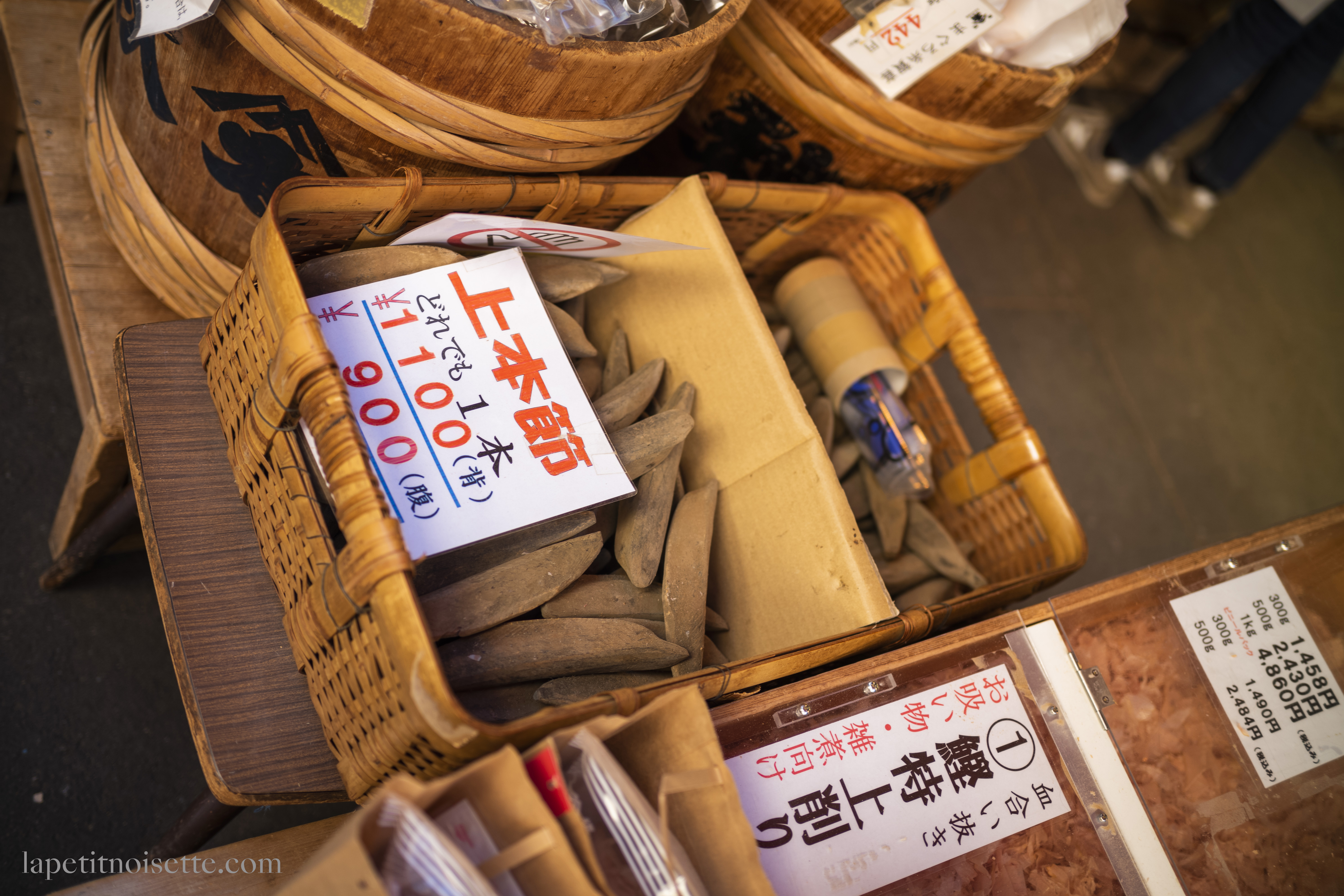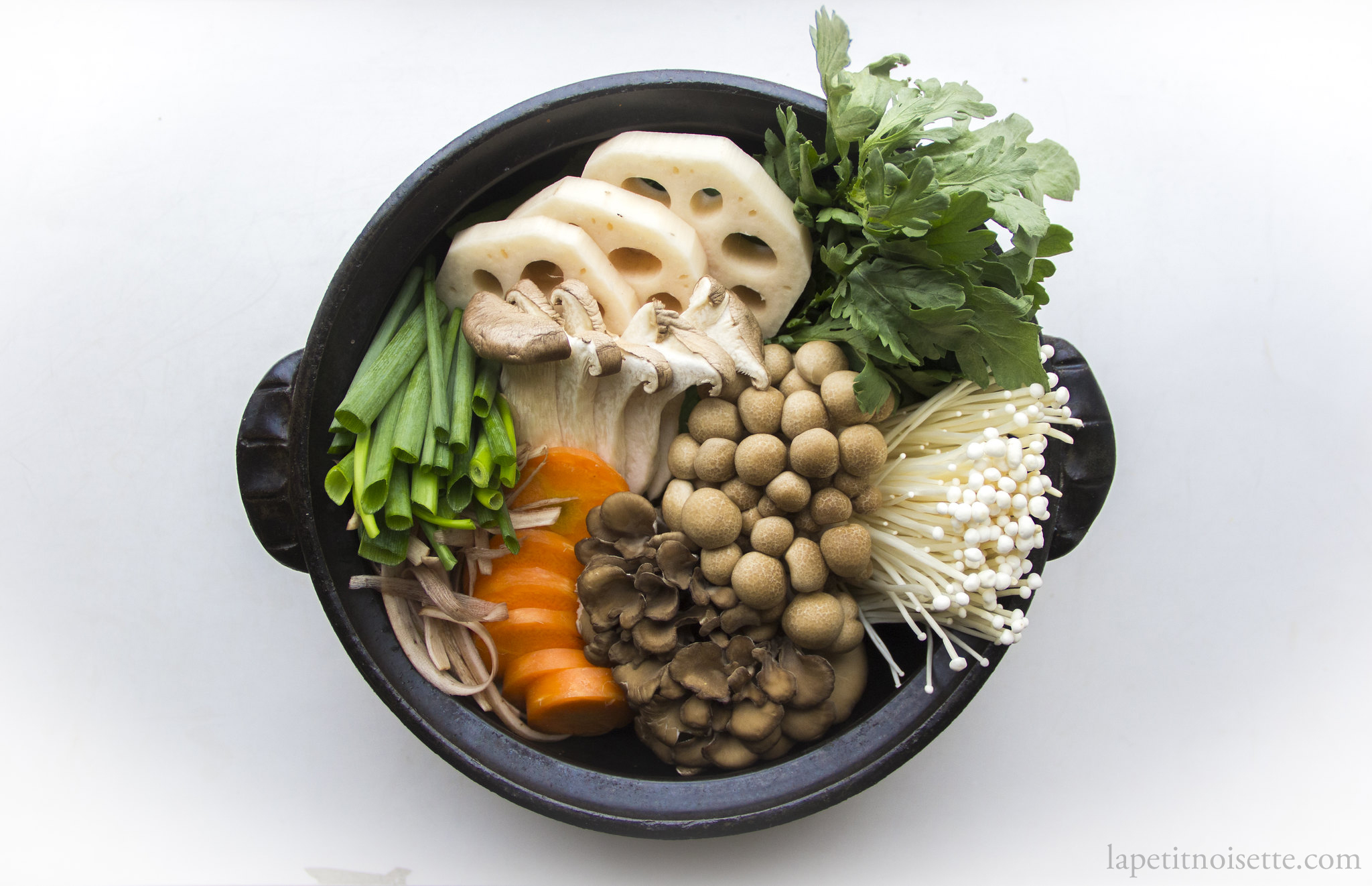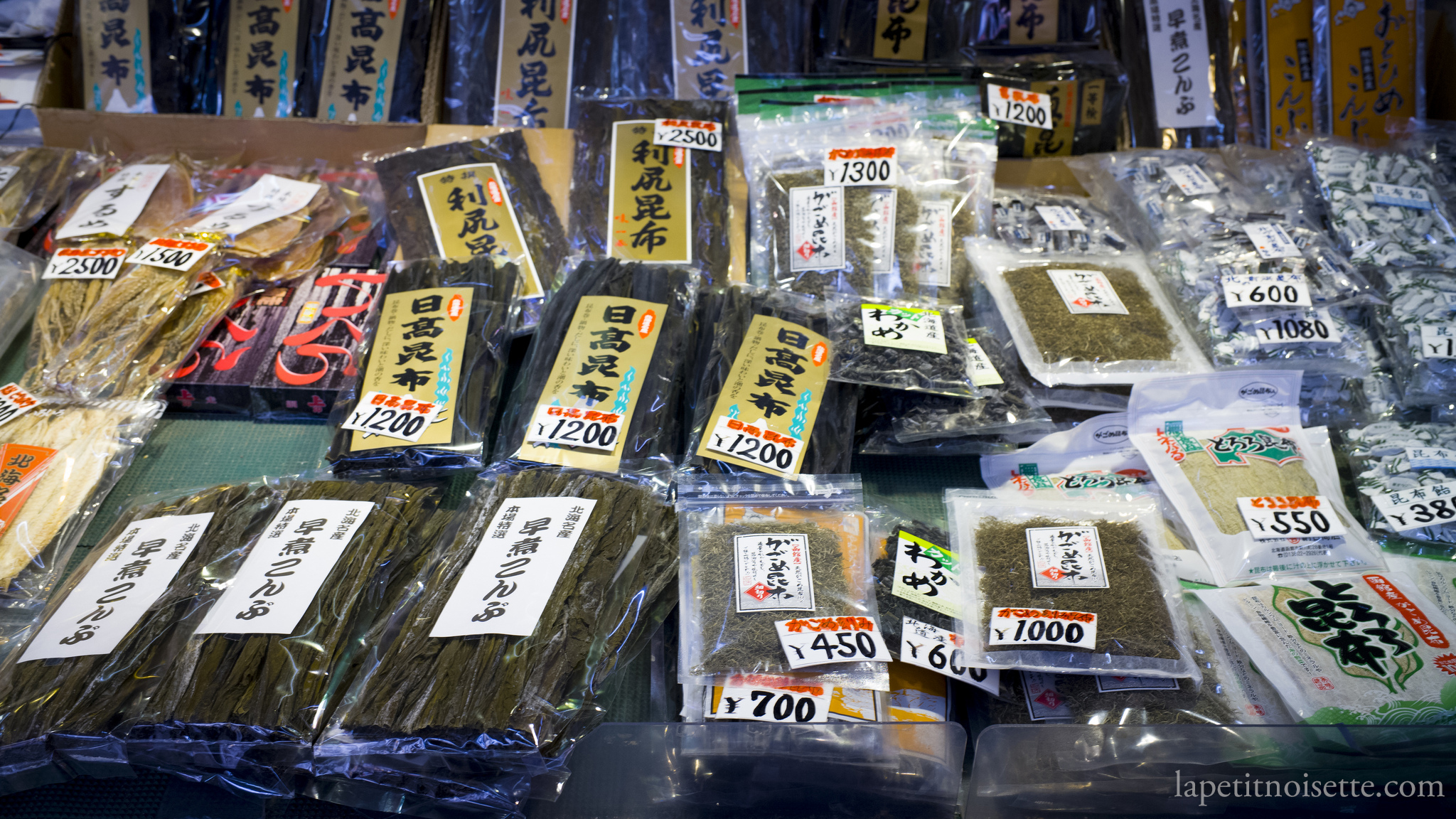This article continues from 4. How to Shave Katsuobushi (鰹節) Using a Kezuriki (削り器)/鰹節のプロがこっそり教える削り方
Looking in any book on Japanese cooking or a quick search on the internet will yield countless examples of this very recipe. Understandably, as no other taste is more synonymous with Japanese cuisine than the deep smoky savouriness of dashi stock. However, we feel that so much emphasis has been placed on making ‘authentic’ dashi the ‘traditional’ way that some level of detail and context has been lost. So alongside repeating the same recipe that you’ve probably read countless of times, we thought we’ll give our opinion on this quintessential ingredient.
Straight off the bat, unless you’re a restaurant, most home cooks in Japan nowadays simply opt for instant dashi whether in powdered form or teabags. Of course you still have families who make dashi from scratch, particularly on special occasions, but that gets less and less common the closer to cities you go. Even for us, instant dashi is still our preferred ingredient for home cooking. Between carrying out experiments and tests for this website, taking and editing photos and writing, there just isn’t enough time to make dashi from scratch for every meal.
Secondly, and we can’t emphasize this enough, we don’t believe that ichiban dashi made from scratch is suitable for most home applications as touted by most sources. Ichiban dashi is made by steeping thinly shaved katsuobushi flakes in barely simmering water for a few seconds up to 1 or two minutes, sometimes with or without the addition of kombu. It is revered as the highest and purest form of dashi served at high end traditional restaurants to showcase their skill and sourcing of ingredients. To create such an expression of dashi, careful attention is paid to every step of the process, such as using only freshly shaved katsuobushi, as well as soft water from natural sources. Furthermore, the dashi must never be brought to a boil and when strained, the katsuobushi flakes are never pressed, lest any impurities or bitter taste be extracted.

Whilst a culinary masterpiece in its own right, in our opinion, the purity and simplicity of it is what makes it easily overpowered when used in everyday applications. At restaurants, they’re used to make highly refined dishes like clear owan soups but when used in dishes like katsudon or nikujaga, their nuanced taste is lost and the dishes end up tasting bland.
But how dare we call it bland?! For two main reasons. The first is outside of Japan, it is hard to find or prohibitively expensive to source high quality dashi ingredients. Most katsuobushi flakes sold are made from arabushi instead of the highest quality honkarebushi, and most kombu is either from China or Korea. When used to make dashi, they do not impart the same intensity of savouriness as what you’d find in Japan for an affordable price.
Additionally, the vast majority of people’s exposure to Japanese cuisine outside of Japan is of chain sushi franchises or restaurants that serve the same few dishes all slathered in mayonnaise and sweet sauce, whilst using copious amounts of instant dashi or MSG. As a result, most people have all but desensitized to umami, causing them to be unable to appreciate the elegant unpretentiousness of dashi.
As an alternative, we recommend trying out the recipe for niban dashi that follows after if you feel that of ichiban dashi to be too light. Alternatively, try our recipe for thick shaved katsuobushi dashi. While the simmering of katsuobushi flakes may be considered sacrilegious at high end restaurants, the practice of simmered katsuobushi flakes to make a stronger dashi can sometimes be seen at everyday restaurants serving the lunch time or after work rush hour crowd. Therefore, feel free to even experiment with lightly simmering the katsuobushi flakes when making ichiban dashi until you obtain a soup stock that suits your palate.
Ichiban Dashi/ 一番だし
This recipe requires 30g of shaved katsuobushi per litre of water. It may not sound like a lot, but freshly shaved katsuo are more voluminous than you would expect. Don’t discard the strain katsuobushi flakes after making the stock – they will be used to make the next recipe – niban dashi. Also, try and use soft water – if possible.
It is important to never bring the katsuobushi flakes to a boil. It can seem counter-intuitive at first – surely you’re a more intense flavour from a roiling boil would be better? But boiling the katsuobushi, or squeezing the contents into the strainer or cloth will result in an indelicate and smoky flavour. This is the opposite of what an ichiban dashi should be.

Yield: 800ml dashi
Ingredients
30g katsuobushi, freshly shaved
1000ml water
Method
- Add water to a pan and bring to a boil.
- Switch off the heat, and add the katsuobushi.
- Leave to infuse for 1 to 2 minutes.
- Strain the stock through a muslin cloth or cheesecloth, layered across a fine meshed strainer and allow to drain naturally. Do not squeeze the cloth to extract more dashi. This squeezes out impurities, such as protein, from the flakes.

Niban Dashi/ 二番だし
Niban dashi is made using katsuobushi leftover from ichiban dashi. It allows you to get more out of your katsuobushi, and also to use imperfect flakes from shaving. Since the second extraction is smokier and has a much stronger taste, it is more suitable for heavier dishes, such as meat stews and red miso soup,
Yield: 440ml
Ingredients
5g (approximately) of freshly shaved katsuobushi flakes
500ml water
Leftover katsuobushi flakes from ichiban dashi
- Add the leftover katsuobushi flakes to a pan
- Fill the pan with the water and bring to a boil.
- Turn down the heat and simmer on low heat for three to five minutes.
- Add the flakes from the shaver into the pan, and turn off the heat.
- Allow to infuse for two minutes.
- Strain through muslin or cheesecloth layered across a fine meshed strainer. Allow to drain for a minute.
- Squeeze the cloth lightly to extract some liquid, but not too hard, as you will extract bitter compounds.

Katsuobushi and Kombu Dashi/Mixed Dashi 合わせだし
This is the most common of all Japanese stocks. It can be used in soups, stews, hotpots and rice dishes. Combining katsuobushi with kombu means that it takes longer to prepare, but has a much more balanced flavour. The kombu gives the stock body, and balances the acidity of the katsuobushi.
Reserve used katsuobushi for niban dashi.
Yield – 800ml
Ingredients
10g kombu
20g freshly shaved katsuobushi
1l water, soft if possible
Method
- Add water to a pan and soak the Kombu for thirty minutes to an hour.
- Heat the pan just until small bubbles start to form on the bottom of the pan, or until it registers 80°C with an instant-read thermometer.
- Take off the heat and remove the kombu, then add katsuobushi, and leave to infuse for one or two minutes.
- Strain the stock through a muslin cloth or cheesecloth, layered across a fine meshed strainer and allow to drain naturally. Do not squeeze the cloth to extract more dashi. This squeezes out impurities, such as protein, from the flakes.
Remember to take out the kelp when the small bubbles emerge from the bottom of the pan and not the sides, this is because the sides of the pan can easily reach 80 ℃ before the water at the bottom of the pan does.
This article continues to 6. Hatsu Katsuo (初鰹) and Modori Katsuo (戻り鰹), the highest quality Katsuobushi (鰹節)